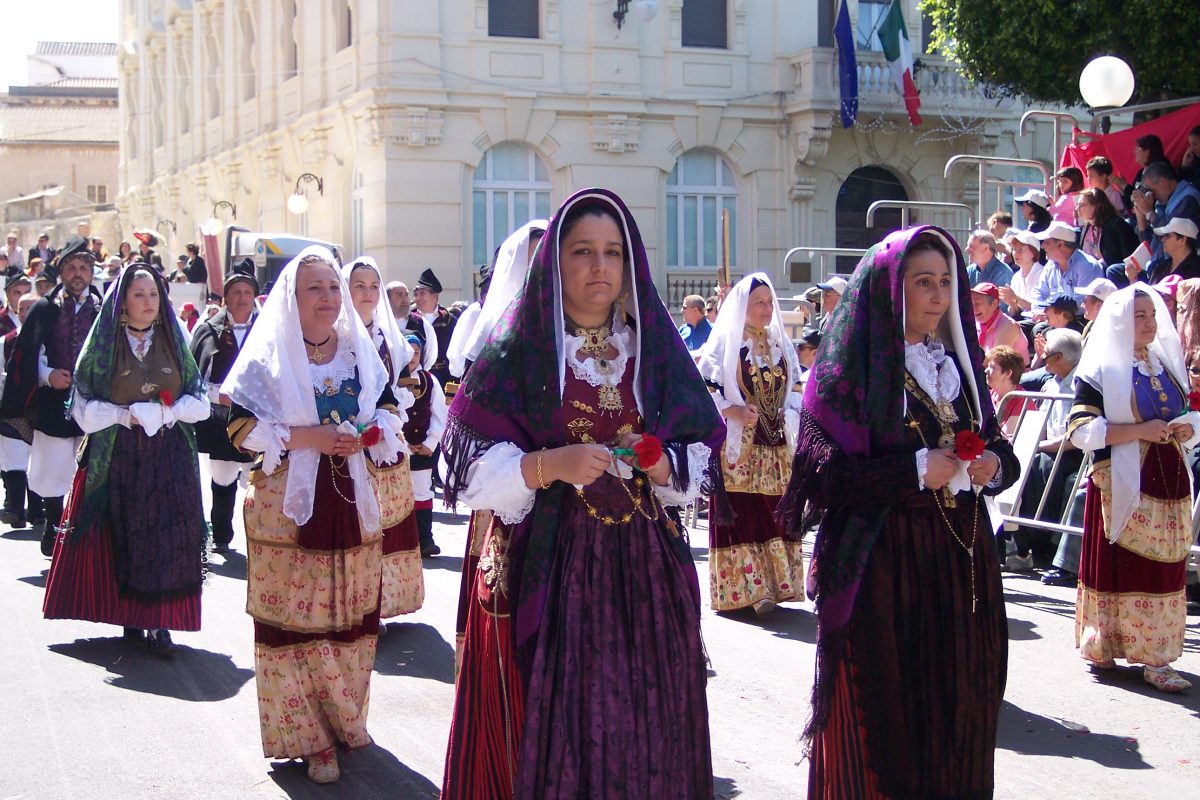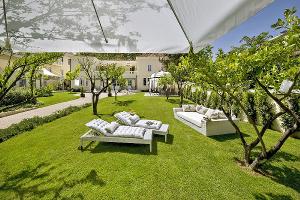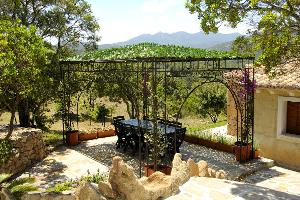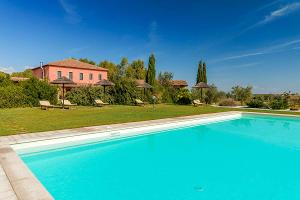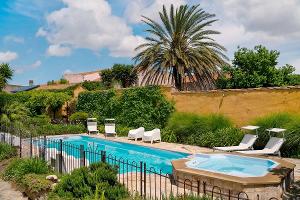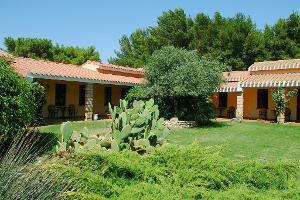Those who associate Sardinia only with summer, sun and sea are indeed missing out. Beyond the beaches lies a deeply rooted culture, which is particularly evident in its festivals. When drums beat and riders in colourful traditional costumes gallop through narrow streets or barefoot pilgrims run through the countryside, the true spirit of Sardinian tradition is revealed.
Festivals such as Sa Sartiglia in Oristano, a medieval equestrian spectacle featuring masked heroes, and the emotional procession in honour of Sant’Efisio in Cagliari, where thousands of people in historical costumes celebrate their patron saint, are much more than just colourful events. They are an expression of a deep spiritual connection, historical memory and collective identity. The ascetic ritual of the Corsa degli Scalzi in Cabras, where barefoot men carry Saint Salvatore through the countryside, and many other festivities, demonstrate that history in Sardinia lives on loudly and proudly, full of emotion.
These are not just dates in the calendar, but moments when Sardinia reveals its full cultural richness, connecting Sardinians across generations. Those who participate in them immerse themselves in a world where faith, pride and community merge into one.
We would like to introduce you to ten magnificent festivals, beginning with the largest in the island’s capital, Cagliari, in the south. The others follow clockwise along the west coast and in the north.
The Festival of Saint Efisio in Cagliari
From 1st to 4th May each year, Cagliari celebrates the Feast of Saint Efisio (Sant Efisio), the island’s largest religious and cultural event. The festival originated from a solemn vow made during the 1652 plague, when the population pledged to carry the saint’s statue in procession from the Stampace district to the beach at Nora in Pula every year. The festival captivates all of Sardinia with its chivalric traditions, traditional attire and elaborately decorated ox-drawn carts. One of the most important moments occurs on the first day, when the procession begins with Saint Efisio marching through the streets of Cagliari on a carpet of flowers. He is followed by worshippers in traditional dress, knights, tracas, religious brotherhoods and mounted militiamen.
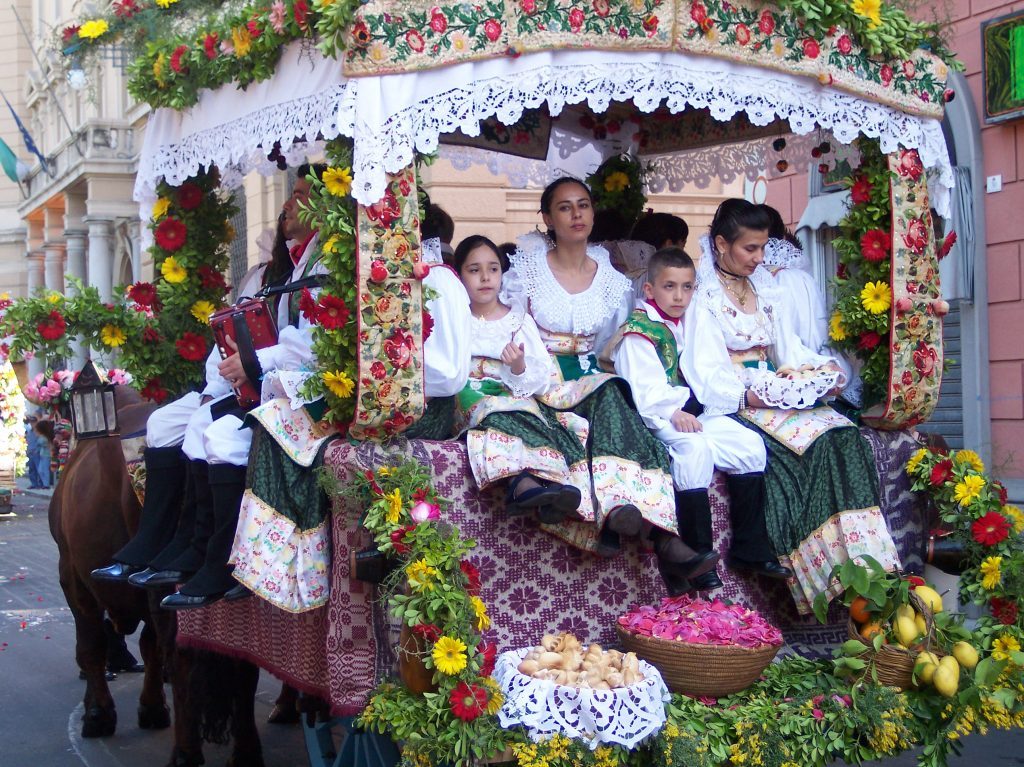
The Festival of Saint Antioco Martire in Sant’Antioco
During the Feast of Saint Antioco Martire, the entire town of Sant’Antioco in southwestern Sardinia comes alive with events honouring the island’s patron saint. The origins of this festival date back to 1360, involving the community in religious rituals, processions and moments of deep devotion. The festival takes place over three days: 15 days after Easter, on 1 August, and 13 November. One of the most exciting moments is the procession, during which the saint’s effigy walks through the streets of the town, encouraging the faithful to participate in a collective gesture of devotion.
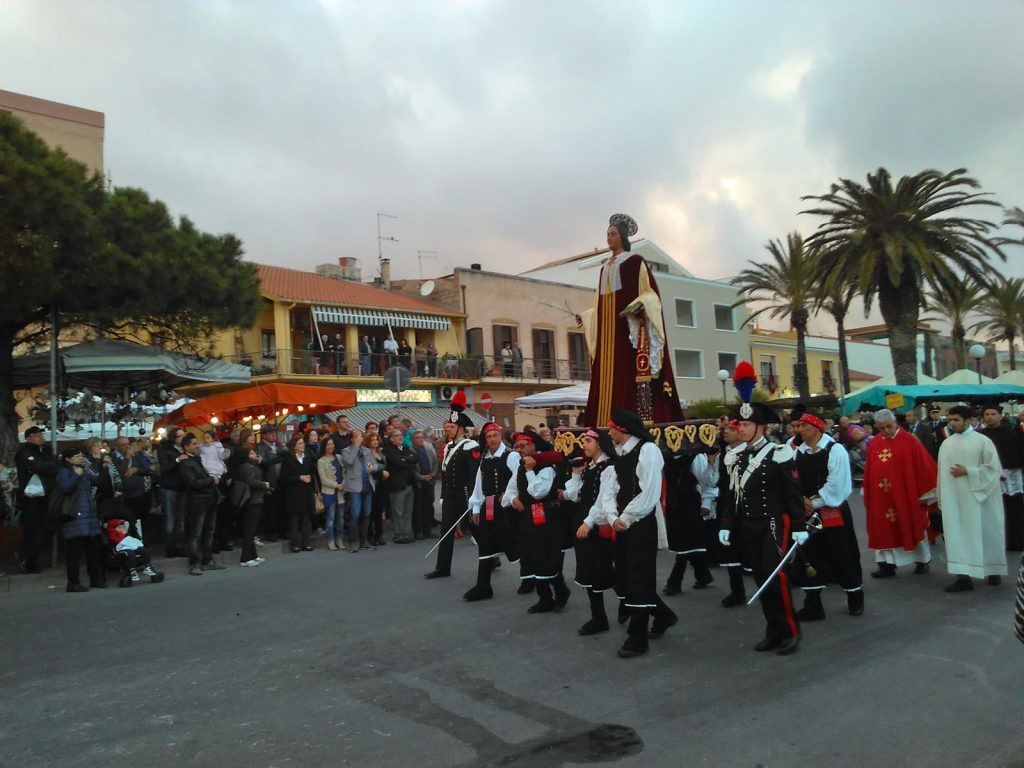
Sa Sartiglia in Oristano
Sa Sartiglia is Oristano‘s carnival festival, located on the west coast of Sardinia. The ritual dressing of Su Componidori, the knight, marks the start of the festival. During the ceremony, Su Componidori is transformed into a demigod and dressed by La Massaia Manna and the Massaieddas. Following a blessing from Sa Pippia de Maiu, the spectacular Corsa alla Stella, or ‘Race for the Star’, begins. Riders challenge each other to a fast-paced gallop to catch the star, which is suspended high above the main street in the old town of Oristano. The festival concludes with Su Componidori being undressed, and, after removing his costume and mask, he becomes a knight again. Alongside the parades of the Barbagia Carnival, the Sartiglia is an important event in the Sardinian Carnival.
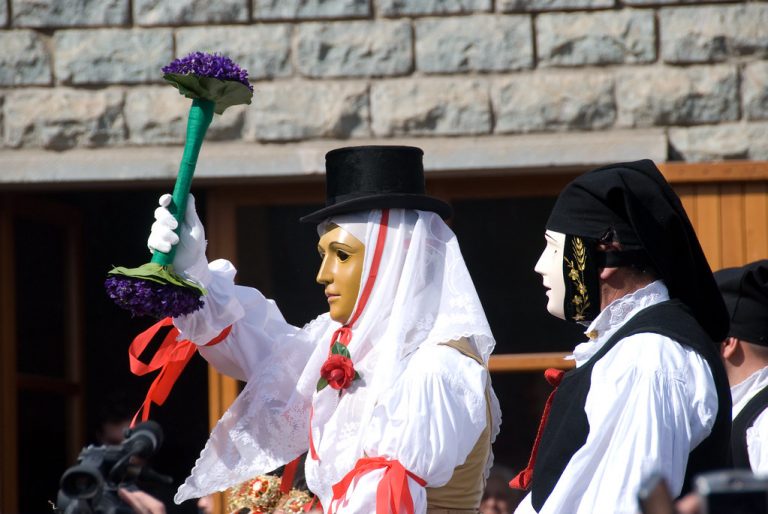
The Corsa degli Scalzi between Cabras and San Salvatore di Sinis.
In Cabras, on the west coast, and in the small village of San Salvatore di Sinis, the festival honouring Saint Salvatore takes place on the first weekend of September every year. The Corsa degli Scalzi (the Barefoot Race) tradition dates back to 1619, when men ran through the countryside barefoot to save the statue of the saint from a Moorish raid. This ‘running around’ tricked the Moors into believing that they were facing a large force, causing them to flee. This act of ruse led to the rescue of the saint and the village.
On Saturday, hundreds of men dressed in white, known as Is Curridoris, collect the statue of San Salvatore from the Church of Santa Maria Assunta in Cabras. They then carry it barefoot along a 7 km dirt road to the village of San Salvatore. The following day, the Is Curridoris bring San Salvatore back to Cabras. During these days, both villages come alive with music, singing and stalls offering local food and wine.
Festa di San Costantino Ardia di Sedilo
S’Ardia is a horse race dating back to 1806. It is held in July in Sedilo, near Oristano, in honour of San Costantino, also known as Santu Antine. The riders, known as pandelas, compete in a perilous descent under the guidance of a race marshal chosen from a secret list kept by the parish priest. The steep route leads through the sanctuary of Sa Murredda, accompanied by escorts and a large group of horsemen. This festival, with its mystical and religious roots, requires months of preparation and attracts tourists from all over the world. In addition to its religious significance, S’Ardia provides an emotional spectacle of dust, horses and enthusiastic participation, making it one of Sardinia’s most impressive festivals.
The Cavalcata Sarda, Equestrian Festival in Sassari
The Cavalcata Sarda takes place in Sassari, in north-west Sardinia, and can be described as an explosion of sound, colour, dance, jewellery and costumes. Although not a religious celebration, the Cavalcata Sarda (Sardinian Ride) is a secular festival celebrating Sardinian culture and folk art. First organised in 1899 in honour of Italian King Umberto I, it was rediscovered in the 1950s. Since then, it has become a permanent fixture in Sardinia.
Numerous men, women and children from all over Sardinia participate, wearing their traditional regional costumes, which are all finely embroidered and full of local symbolism. A particular highlight is the parade of mounted groups, in which riders wearing historical costumes perform elaborate formations and demonstrate traditional equestrian skills. The acrobatic displays are particularly impressive, with young men leaping onto galloping horses or riding in group formations.
Discesa dei Candelieri in Sassari
Also known as the ‘Descent of the Candles‘ (Italian: Discesa dei Candelieri), this fascinating centuries-old festival is celebrated every year on 14 August, the eve of the Feast of the Assumption of Mary (Ferragosto), in Sassari in north-west Sardinia. Known locally as the Faradda di Li Candareri, it is one of Sardinia’s most important and symbolic folk festivals and has been recognised by UNESCO as an Intangible Cultural Heritage of Humanity.
The ‘candles’ are not ordinary candles, but 13 ornately decorated and painted wooden columns, several metres high and weighing up to 300 kg. These symbolise votive candles carried on the shoulders of various guild members, including blacksmiths, bakers, carpenters and farmers, in a solemn procession through the streets of the old town to the Church of Santa Maria di Betlem. There, they are placed as an expression of gratitude to the Virgin Mary.
The origins of the festival date back to the 13th century, when Sassari was threatened by the plague. The city promised the Virgin Mary that it would hold an annual procession in her honour if it was spared the disease. The request was granted, and the promise has been renewed every year since.
The Feast of Saint Simplicio in Olbia
The patron saint of Olbia, Saint Simplicio was the island’s first recorded bishop and was martyred in 304 AD during the persecution of Christians under Emperor Diocletian. The annual celebrations in his honour, known as Sa Festa Manna de Mesu Maju, take place from 10th to 15th May. The festivities open with a spectacular fireworks display over the sea, followed by a procession carrying the saint’s statue through the city streets. Participants, often dressed in traditional Sardinian attire, accompany the procession with songs and prayers. A highlight of the festivities is the ‘Palio della Stella‘, a historic race symbolising the community’s connection to its history and culture. Alongside the religious ceremonies, there are numerous cultural events, including concerts, traditional dances, and culinary specialities such as the ‘Sagra delle Cozze’, a festival celebrating the local mussels.
The Feast of the Redeemer in Nuoro
The Feast of the Redeemer (Italian: Festa del Redentore), established in 1901, is a symbol of Sardinia, combining tradition and folklore. The pilgrimage begins on 29 August at Nuoro Cathedral and ends at the summit of Monte Ortobene. The festival is a perfect blend of tradition and folklore. Two days prior, a regional folklore festival takes place, attracting thousands of participants in traditional costumes, knights and carnival masks. This incredible display of Sardinian traditions combines elegance, jewellery, music and colour.
The Feast of Saint Francis of Lula
The Feast of Saint Francis of Lula is a unique festival celebrated on 4 October and 1 May. Lula is a small, traditional village in the northeast of Sardinia, nestled in the hilly landscape of Barbagia, one of the island’s most pristine and culturally rich regions. The village lies at the foot of the impressive Monte Albo mountain range, whose white limestone landscape and untouched nature make it a popular destination for hikers and nature lovers.
During the festival, thousands of pilgrims walk to the Sanctuary of San Francesco, located outside the village, which features a statue of the saint. According to legend, the church was founded by a bandit as a sign of gratitude for being proven innocent. This pilgrimage is considered one of Sardinia’s oldest and most significant religious traditions. Many pilgrims wear traditional regional clothing and walk barefoot or in penitential garments as an act of deep piety and humility. During the novena, the faithful are offered traditional dishes such as su filindeu and su zurrette. The festivities culminate in a procession of the simulacrum to Nuoro, followed by a convivial lunch in the countryside.
 it
it de
de nl
nl en
en fr
fr
